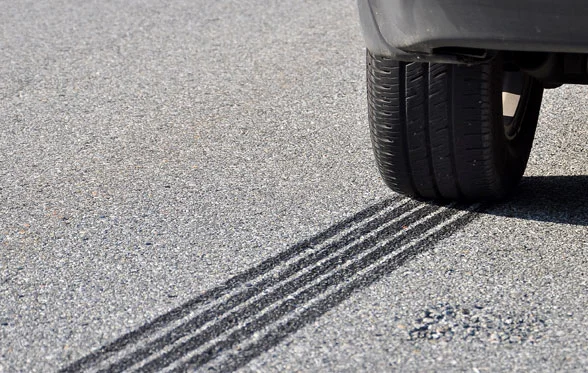On October 26, 2012, NHTSA published a Notice of Proposed Rulemaking (Vol. 77, Number 208; Docket Number NHTSA-2012-0149) addressing Make Inoperative Exemptions; Vehicle Modifications to Accommodate People with Disabilities, Ejection Mitigation. This proposal responds to a petition from Bruno Independent Living Aids (Bruno).
The National Traffic and Motor Vehicle Safety Act and NHTSA's regulations require vehicle manufacturers to certify that their vehicles comply with all applicable FMVSSs at the time of manufacture. A vehicle manufacturer, distributor, dealer, or repair business may not knowingly make inoperative any part of a device or element of design installed in or on a motor vehicle in compliance with an applicable FMVSS. NHTSA used its authority to issue regulations that exempt regulated entities from the "make inoperative" provision when it promulgated Part 595 subpart C, Make Inoperative Exemptions, Vehicle Modifications to Accommodate People with Disabilities. Under the regulation, a motor vehicle repair business that modifies a vehicle to enable a person with a disability to operate or ride as a passenger in the motor vehicle and that avails itself of the exemption provided by Part 595 subpart C must register itself with NHTSA. The modifier must affix a permanent label to the vehicle identifying itself as the modifier and the vehicle as no longer complying with all FMVSS in effect at original manufacture, and must provide and retain a document listing the FMVSSs with which the vehicle no longer complies and indicating any reduction in the load carrying capacity of the vehicle of more than 100 kilograms (220 pounds).
FMVSS 226 is a new regulation with a phase-in starting September 1, 2013 and currently is not addressed in Part 595. On May 17, 2011, Bruno submitted a petition for rulemaking to amend Part 595.7 to include an exemption from the requirements of FMVSS 226. Bruno manufactures a product line it calls "Turning Automotive Seating (TAS)." A TAS seat replaces the original equipment seat to provide safe access to private motor vehicles for mobility-impaired drivers or passengers, semi-ambulatory or transferring from a wheelchair. In their petition Bruno referred to a similar petition and subsequent Final Rule that provided an exemption from FMVSS 214's moving deformable barrier (MDB) and pole tests as applied to a designated seating position that must be modified by changing the restraint system and/or seat at that position to accommodate a person with a disability. Bruno states in its current petition that FMVSS 226 will enhance the side air bag technology of FMVSS 214 and that these enhanced side air bags present much of the same difficulties when accommodating the transportation needs of mobility impaired persons as those discussed in the rulemaking for FMVSS 214. Bruno states: "Where the FMVSS 226 ejection mitigation system is an OEM seat component (e.g., seat back); it cannot be replaced within the TAS replacement seat due to the large variety of seat designs and ICU interfaces encountered. Also, the OEM seat can rarely, if ever, be structurally modified to fit the TAS mechanism." Thus, Bruno believes that an exemption from FMVSS 226 is warranted.
NHTSA proposes to amend Part 595.7(c) to add an exemption for FMVSS 226. However, NHTSA requests comments on the necessity of the exemption. NHTSA does not quite agree with the petitioner's statements. FMVSS 226 is likely to affect side curtain air bags, but will not affect torso air bags or seat components. Further, there are significant differences between the requirements in FMVSS 214 and 226. The MDB and pole tests specified in FMVSS 214 are full vehicle dynamic crash tests conducted with instrumented 5th percentile adult female and 50th percentile adult male dummies. In contrast, the performance requirements specified in FMVSS 226 are based on a component test of the ejection mitigation countermeasure. It is possible, and maybe likely, that removing the original seat and replacing it with a seat to accommodate a person with a disability will have no negative impact on the performance of the curtain air bags in the context of FMVSS 226. If the side curtain air bag must be made inoperative to accommodate a disabled person in the driver's position or in a rear passenger position (e.g., to install a TAS seat in the driver's position or the rear seat position), ejection mitigation protection provided by the curtain would be made inoperative for the other occupants as well (even those not using a TAS seat). To achieve the maximum safety benefit of the regulations, it is NHTSA's desire to provide the narrowest exemption possible to accommodate the needs of disabled persons, without unreasonably expanding its use to situations where the benefits of the exemption may be outweighed by the drawbacks of nonconformance with the safety standard.
NHTSA is providing a 60-day comment period. In view of the September 1, 2013 phase-in date for FMVSS 226, and because this rulemaking would remove a restriction on the modification of vehicles for persons with disabilities, if a Final Rule is issued NHTSA anticipates making the amendment effective in less than 180 days following publication of the Final Rule. Written comments regarding this proposal must be received by NHTSA on or before December 26, 2012.
